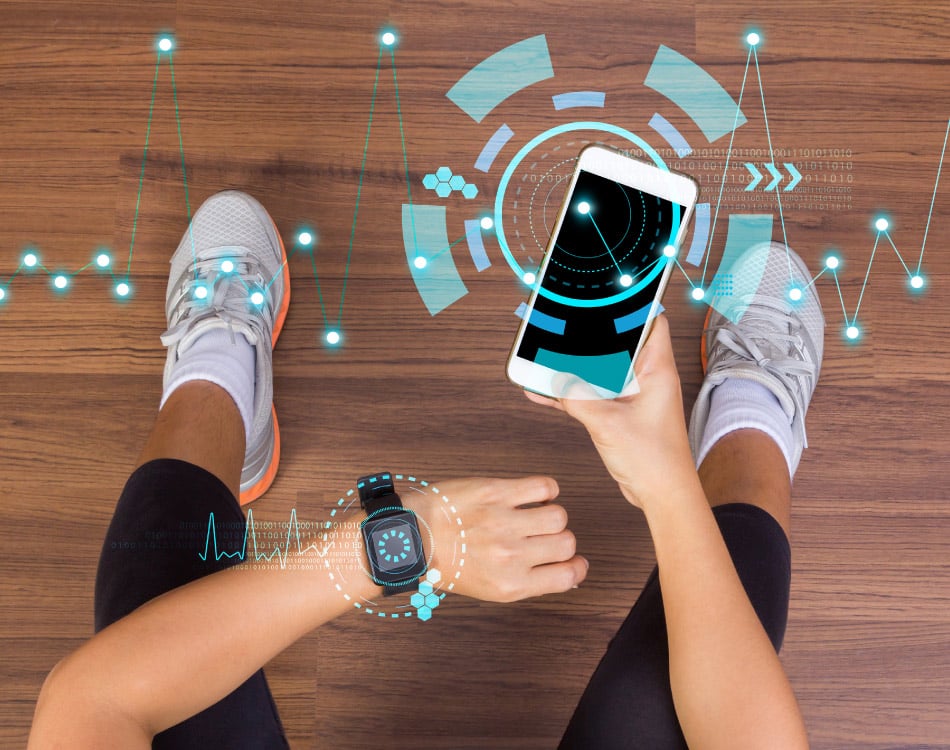Athletes and active individuals today are spoilt for choice when it comes to fitness tracking devices and fitness technology like workout and fitness apps.
Smartphone functionality, developments in GPS tracking technology, and advancements in design means there are phones, purpose-built fitness trackers, GPS-enabled watches and other devices that track multiple variables and offers in-depth feedback.
READ MORE | Read The Signs For A Complete Picture Of Your Body And Health
Measuring What Matters
The key functionality outside of basic time, distance and pace tracking requires your heart rate. This biofeedback is used to determine the intensity of your training and calculates your overall training load, which informs your recovery requirements.
Your maximum heart rate (MHR) and resting heart rate are two vital variables that enable your device to accurately assign heart rate zones to track exercise intensity and informs other device functionality such as Training Effect (TE) and Recovery Advisor. Accurate heart rate zones are also important when you integrate with other training applications.
Wrist-based devices, wearables and various other peripherals and apps collect, store and share various other data, including sleep, daily movement, and more, and connects our physical world with the virtual one via the internet.
This has given rise to the age of big data and human-computer interaction, where the idea of the “quantified self” has grown in popularity.
READ MORE | Smart Real-Time Virtual Coaching Delivers Performance Benefits For Runners
Analyse your Data
The real analysis happens when you download the data from your device to an online portal or compatible app.
This is where the analytics tools and advanced algorithms interpret data sets to deliver meaningful, relevant and helpful insights. The digital interfaces then integrate fitness data into our daily lives, offering opportunities to improve our health and fitness.
When users login to the app or web portal, all your information is already there, displayed as user-friendly graphs, with valuable insights and feedback that you can apply immediately to take another step closer to your goals.
Certain platforms give you the ability to overlay multiple data points to compare performance variables. The data provided is also extremely granular, allowing the programme to make more accurate distinctions about heart rate variability or resting heart rates that could indicate early signs of overtraining, illness or poor recovery, as examples.
READ MORE | New Tech Helping Improve Early Prostate Cancer Detection
Informing Recovery
Making gains and avoiding things like overtraining all hinge on adequate recovery. As such, it pays to know how long you should recover for between sessions to allow adaptations to occur and ensure complete recovery.
In the past, this was based largely on instinct and best estimates, but modern fitness devices have taken a lot of the guesswork out of recovery for many athletes.
By analysing data like how much time you spend close to your MHR while exercising will inform your recommended recovery time. This figure is cumulative and should be used as a guideline for optimal recovery. This information allows users to make a more informed decision about the intensity they should train at their next session.
The system also starts to build up a more detailed profile the more you train, which then becomes more accurate over time.
READ MORE | Turn Your Daily At-Home Exercise Into A Game
Improving Performance
Devices also track metrics related to performance, including variables like movement efficiency in running, swimming or cycling using a built-in accelerometer to track cadence, ground contact time and vertical oscillation. Users can use this data to improve technique.
And with additional functionality like VO2max tracking, devices can integrate data to recommend workouts or training plans via the virtual coaching function to help you inprove your fitness over time.
READ MORE | Wearable Tech Joins Covid-19 Fight
Addicted to Tech
While these technologies have undoubtedly revolutionised the way we approach health and fitness, there’s a dark side to the incessant reliance on them.
One of the primary drawbacks of excessive dependence on fitness technology is the obsession over metrics.
Constantly monitoring the number of steps taken, calories burned, or heart rate can lead to an unhealthy fixation on hitting certain numbers.
This obsession may detract from the joy of physical activity and shift the focus from overall well-being to meeting arbitrary benchmarks. In some cases, it can even lead to stress and anxiety, defeating the purpose of a healthy lifestyle.
A fixation on fitness technology can also make us lose sight of the broader picture of holistic well-being. Mental health, emotional balance, and adequate rest are integral components of a healthy lifestyle, yet fitness technology tends to prioritise quantitative metrics related our physical condition.
While fitness technology undoubtedly offers valuable tools for monitoring and enhancing our health, it’s crucial to strike a balance between leveraging these advancements and maintaining a holistic approach to well-being.
Embracing the benefits of technology while avoiding over-reliance allows individuals to enjoy the positive aspects of fitness tracking without succumbing to the potential pitfalls. Ultimately, the key lies in cultivating a mindful and balanced approach to health and fitness that considers both the quantitative and qualitative aspects of a healthy lifestyle.













